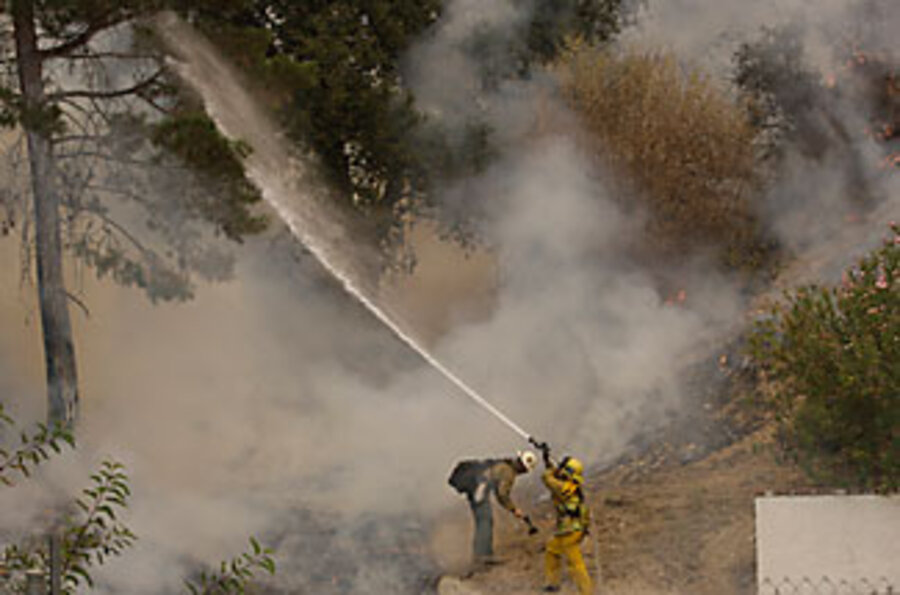Firefighters' battle to save California town 'truly amazing'
Loading...
| La Canada, Calif.
At the Red Cross evacuation center here at La Canada High School, shelter manager Alex Mendoza is praising the efforts of the 6,600 firefighters who have coordinated in the hills above this community of 22,000 for more than one week. The fire is now larger than 120,000 acres – about the size of Washington, D.C. – and has slowed only slightly because of higher humidity which settled in on Tuesday.
"It is truly amazing that these firefighters have been able to save this entire town while at the same time evacuating so many," he says. Fifty years of undergrowth are producing mega-hot fires which race up and down the steep canyons here, fanned by wind, and fed by the angle of the geography.
The comments are echoed by Inspector Frederic Stowers of the Los Angeles County Fire Dept. who says the firefighters' biggest challenge has been to evacuate some 4,000 people while at the same time trying to protect both home structures as well as communication towers and the observatory on Mt. Wilson.
"The logistics of a fire like this are the biggest challenge," says Mr. Stowers, who adds that fire coordinators have made huge leaps in speed in recent years with lots of practice using super-scooper airplanes, helicopters, and fire engines which must navigate the twisty-turned roads – not to mention human beings who have to wrestle hoses on narrow streets and canyons.
With a shift of wind, the same firefighters who were chasing flames may now have to run the other direction to escape them. The two firefighters who died Monday were on their way down a dangerous mountain road scouting an exit strategy for dozens of inmate firefighters. Their truck tumbled off the edge, killing both.
A Boeing 747 was deployed Tuesday to deliver four acres of water near the Mt. Wilson communication towers. If the towers are lost, regional television and cellphone service will be interrupted, which could hurt the ability of officials to coordinate fire prevention efforts, among other things.
The wind has died down in recent days, which means a respite from fanned flames. But it also brings the problem of smoke plumes hanging directly over firefighters, which causes more of them to be overcome and which makes aerial efforts via helicopter very dangerous, says Stowers.
The flames have spread over 190 square miles of forest in a week. Some 12,000 homes remained threatened as 3,600 firefighters and aircraft battle the blaze across a 50-mile line.
For some, the California fires raise questions about firefighting philosophy and techniques.
"We need to change the approach of the US Forest service in stopping wildfires as quickly as possible," says Ron Kupka, who runs an outdoor education program in the Angeles National Forest. He says that practice – which the USFS adopted widely in the 1920s – has halted the natural eradication of underbrush and brought the unintended consequence of increasing the primary fuel for megafires which become harder and harder to put out and which exhaust firefighters.
Staff writer Gloria Goodale contributed to this report.
This report includes material from the Associated Press.
-----
Follow us on Twitter.





